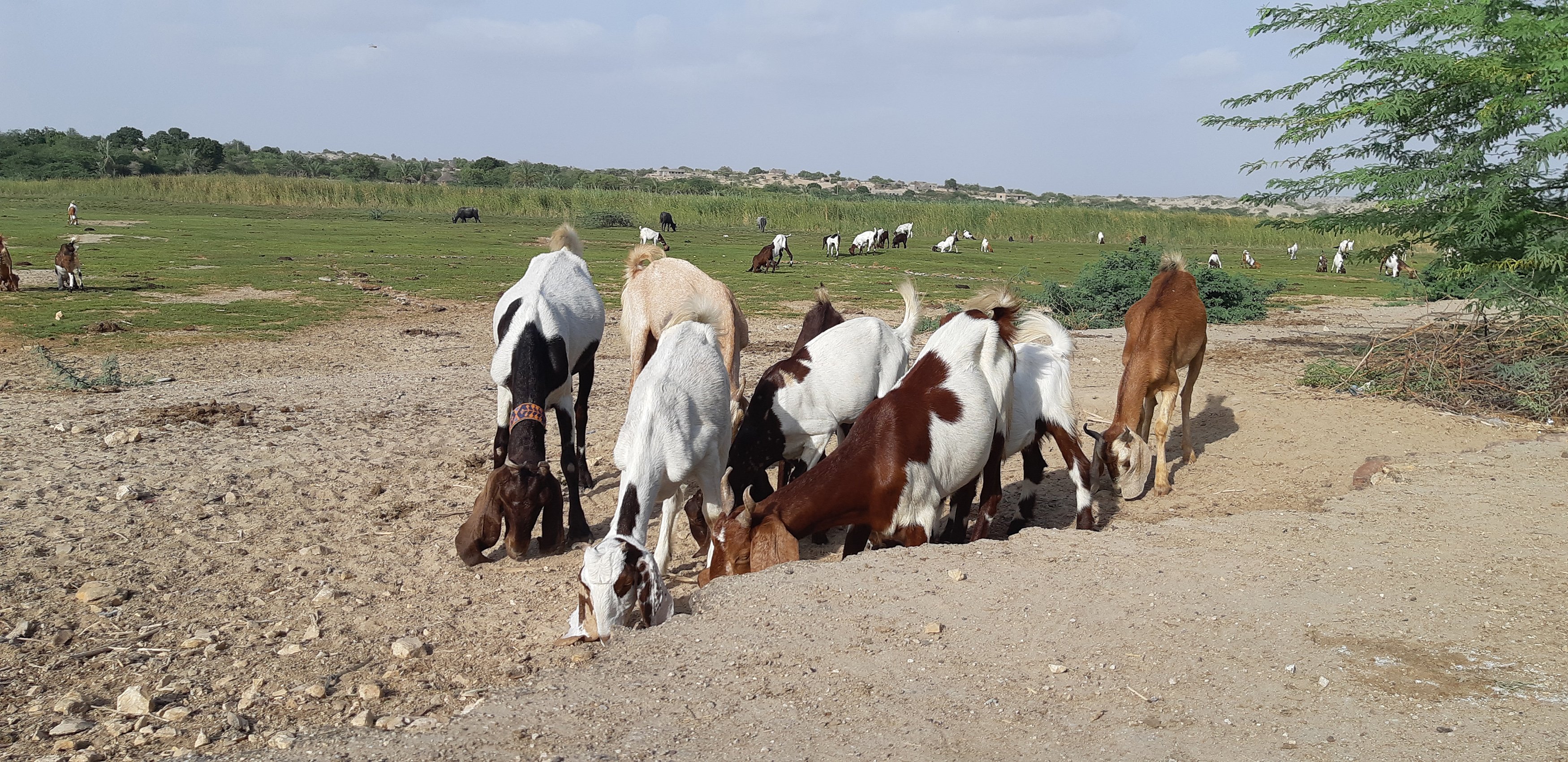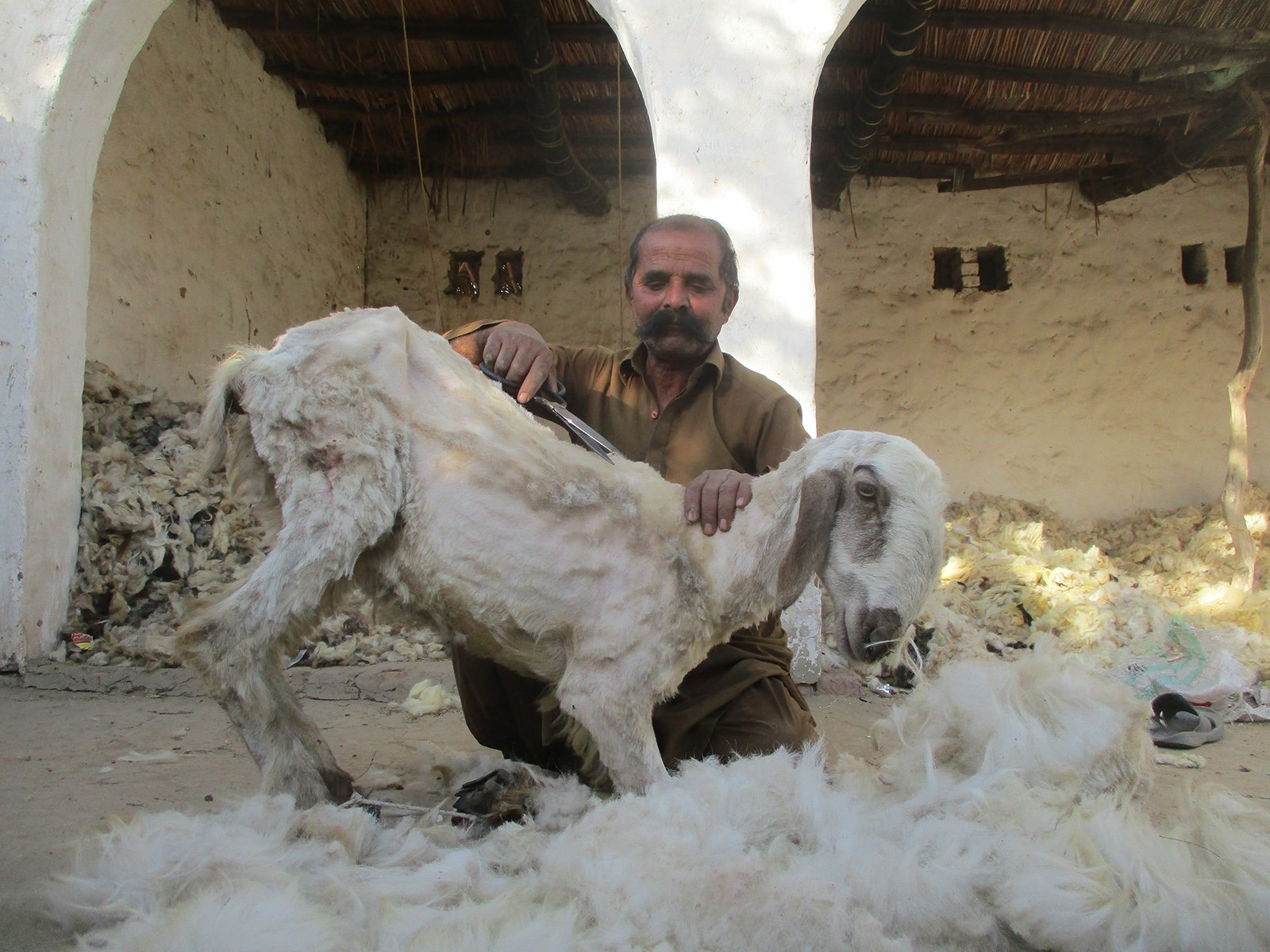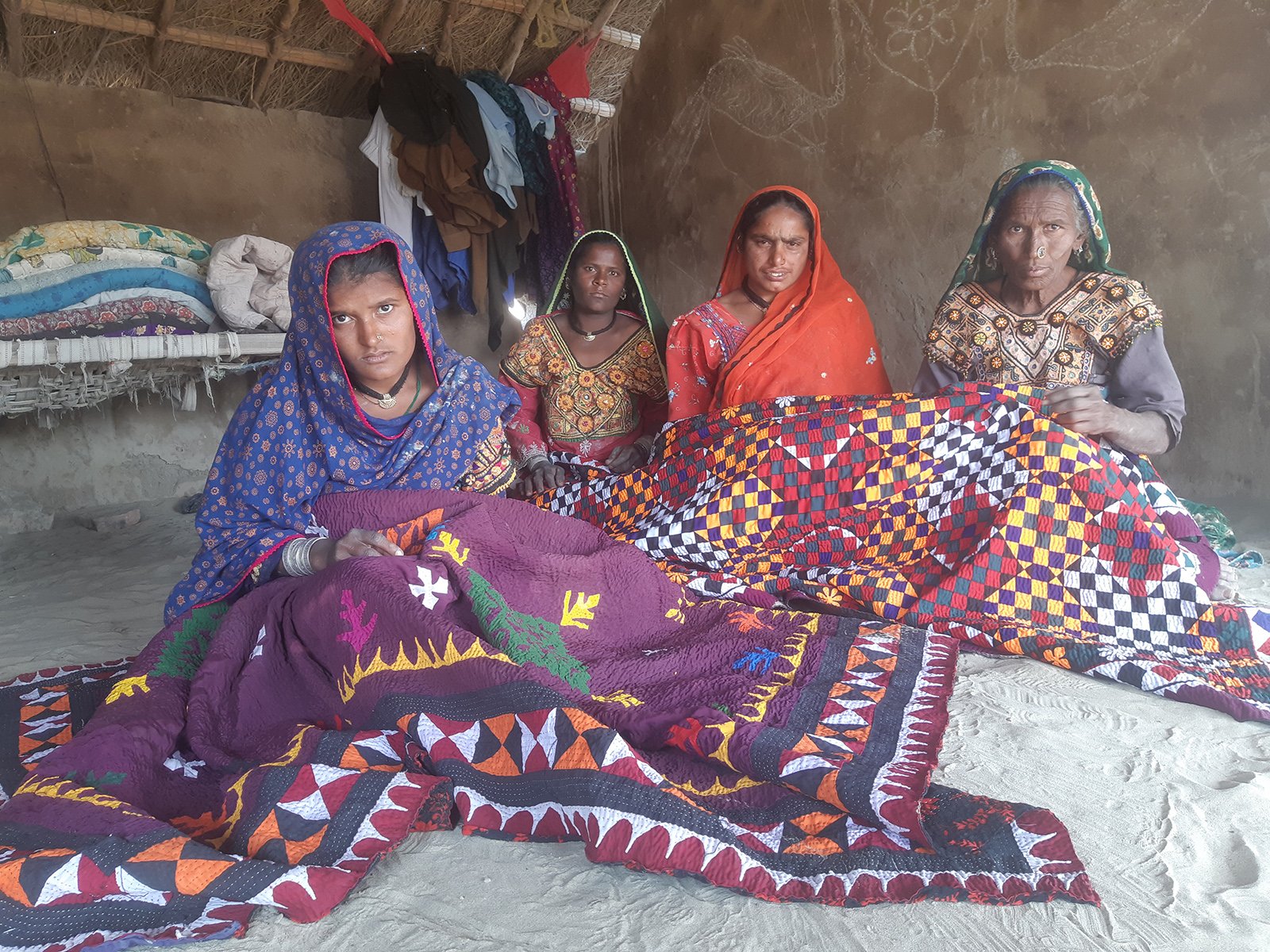Krishan Meghwar never thought he would be standing behind a kiosk, selling vegetables in a town in Sindh’s Achro Thar Desert. For centuries, his tribe had been in the business of sheep-shearing. But three years ago, he was forced to switch professions. A drought had hit his village and the surrounding desert. Inadequate and erratic rain patterns had devastated the crops and livestock. Even today, three years later, the relentless drought continues to ravage the desert, shrinking opportunities for Meghwar and others like him.
His village, Hathungo, is located some 300 kilometres from Karachi, Pakistan’s financial hub. The drought here has led to the outbreak of Peste des petits ruminants (PPR), also known as goat plague, a highly infectious disease that affects goats and sheep. As a result, the mortality rate, amongst the animals, has shot up. Coupled with insufficient fodder, the animals are either dying or not producing enough of a woolly coat.
In good times, the wool or goat hair was used to make sutt (yarn), rugs, carpets and khais (blankets) or jhaal, a bag used to carry grains stock and utensils during long camel rides.
Fourteen generations of Meghwar’s family were involved in the cottage industry of shearing sheep. Him, and others like him, would supply wool and its manufactured products to large factories in other parts of Pakistan. “Now 75 per cent of the animal-fibre business has been shut down,” he tells Geo.tv, “This was our heritage. We have now lost it.”
Achro Thar is located near the border separating Pakistan from India. Locally it is known as the White Desert, due to the colour of its sand.
Unlike the desert in Sindh’s Tharparkar and Umerkot districts, Achro Thar’s land is infertile. That means even if there are plenty of rains, there can be no crop cultivation in the area. For the villagers, a rainy season is important to store drinking water and to cultivate grass for their livestock. Around 90 per cent of the population, men and women are directly or indirectly linked with the animal-fibre industry. By some estimates, the population of the desert is 50,000, while the livestock is over 1.5 million.
What makes the desert stand out is its unique breed of animals, the kind found in no other place in Pakistan. The Thari goat, for instance, is known for producing hair and wool more than other famous Sindhi breeds, namely, Kamori, Bari and Taapri.

Khatu Shikari Bheel was also once part of the industry. He has recently become jobless. “I am 58-years-old. The only thing I know how to do is make carpets and rugs,” he explains, “At this age, I can not learn a new skill. And if I don’t work I will starve.”
Besides the men, the women of the desert have also fallen on hard times. Many of whom would make hand-made Ralli quilts, and Sehras, a headdress worn by grooms in Pakistan.
“The drought has been ongoing for so long, that people have stopped spending on anything other than food,” Sodhi, 60, a female artisan, told Geo.tv, “There is no longer any heavy spending on marriages. Our weddings are now simple and colourless.”
Allah Bachayo Gaju, a local environment expert, explains that droughts in the country have increased drastically in the last 15 years, largely due to changing weather patterns.
“Frequent droughts make it hard for animals to survive,” he says, “For the first time, pregnant goats and sheep are dying in large numbers. At the time of giving birth, they are too weak to survive. On other occasions, the mother goat is undernourished and cannot give milk to the young ones.”
As per the Livestock and Husbandry Department in Sindh, 8,000 livestock reportedly died due to the drought in the last six months, most of them were goats and sheep. Locals say the number is much higher. They complain that the provincial government is not doing enough to save animals, such as offer routine vaccinations.
“The government should start drought mitigation on an emergency basis. It should support our small cottage industry, which is dying,” said Kahtu, a local artisan.
As of now, there are no announced programs to deal with the big dry. Nothing is being done to save the animals either.
Kunbhar is a Karachi-based environment journalist. He tweets @ZulfiqarKunbhar




